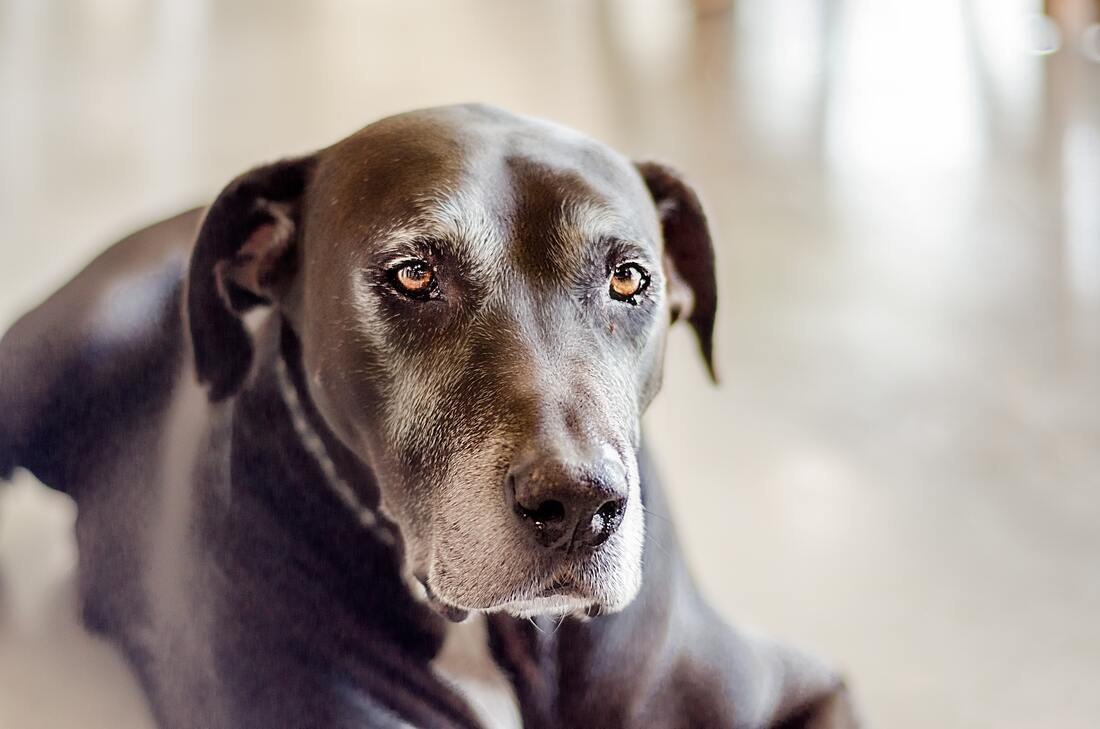|
For animal owners
Having a dog with arthritic conditions can be upsetting and challenging for owners. Whilst it is important to receive specific advice from your veterinary physiotherapist, especially when it comes to exercise treatments, dietary plans and any medicinal treatments or surgical plans, there are some ways you can help a dog with arthritis at home.
Turn on the TV or radio when you are not home This is a simple thing to do but can be beneficial to dogs that have severe mobility issues. Turning on the TV or radio to something peaceful can help drown out other noises such as children playing upstairs, or post getting delivered, which can cause your dog to automatically spring into action and potentially injure themselves. The last thing you want is for them to accidentally cause damage or injury to themselves or be in pain, especially when they are alone or unsupervised. Incorporate certain foods into their diets Oily fish and sweet potato are just two foods that are sometimes recommended for dogs with arthritis. Studies have shown that oily fish such as salmon, sardines or mackerel can decrease inflammation that is associated with arthritis in dogs. Make sure you choose plain fish as opposed to those based in a tomato or spicy sauce as these can be harmful or toxic to dogs. Sweet potato is a food that many dogs find easy to digest and can help provide them with a beta carotene boost which has also been proven to reduce arthritic inflammation. Again, serve this plain as opposed to in butter or milk. Whilst these foods can be good for your dog, it is imperative that you discuss with your vet before you introduce any new foods into your dog’s diet. They will be able to confirm whether this is a good idea or not, as well as let you know what portions and frequency you should be feeding them. Go for walks for some relief Whilst a dog with severe arthritis will naturally be more sedentary, it is important to continue to walk them every day, even if it is not the same pace or distance they used to do. Try to keep your dog moving constantly throughout the walk and try to aim for 20 minutes per day (ideally two 20-minute walks per day). Try and avoid your dog stopping to sniff all the time as stopping and starting is something you don’t want to happen. Start with five minutes of slow walking to help your dog build its pace. Spend 10 minutes walking quicker, then use the final five minutes as a cool down where you reduce the speed back down. Avoid mobility commands where possible Whilst you will sometimes still have to use mobility commands, try to avoid them where possible. Using commands to get them to “sit” or “lay down” in exchange for a treat can potentially make them uncomfortable or cause them pain. Instead, you can exchange treats for a kiss or hug, or hide them around the home in places where your dog won't have to exert themselves to reach. Dog Massage Massage therapy is a common method for coping with arthritis and, whilst it is advised to go to a specialist for a more intense massage, there are some easy to learn techniques that you can apply at home. Massage can help get your dog’s blood flowing to the arthritic areas and can help to temporarily reduce the pain and stiffness, sometimes for several hours. Apply a heat pad Massage therapy can be used in conjunction with heat therapy. Apply a dog friendly heat pad onto your dog’s arthritic areas. Make sure you supervise your dog whilst the heating pad is on them and don’t leave them unattended with the heat pad on. Keep your dog's nails trimmed If your dog has nails that are too long, they can annoy them and cause them to walk differently which can lead to them distributing their weight in a way that aggravates their arthritis. This is commonly done by a groomer or a veterinarian, but you can also do this at home yourself with a pair of pet-safe nail clippers. Consider their dog bed carefully Dogs that suffer from arthritis ideally need something to cushion the joints that are hurting them most. With this in mind, you may want to consider investing in more than one dog bed and having them located in the rooms where the family spends the most time. This means your dog can comfortably spend time with its family. This is also great for houses that have hardwood floors which don’t provide any support or comfort. You can also purchase specific orthopedic dog beds. Whilst all your dog beds don’t need to be orthopedic, you may want to invest in one for their main bed as they can make a big difference to the dog’s stiffness and overall mobility. Make sure you do sufficient research before buying to ensure you are purchasing one that best suits your dog's needs. Buy rugs if you have hardwood flooring If you have hardwood flooring, then make sure you have areas with rugs on the floor to help provide your dog with some much needed cushioning. Use rug grips or specific carpet tape to make sure the rugs are secure as it will help to stop your dog from tripping on them or sliding. Consider indoor pee solutions Many dogs that suffer from arthritis end up having bladder issues. It can be difficult for them to keep going outside to go to the toilet, so you may want to consider some indoor alternatives. Pee blankets or pee turf can both be purchased for this purpose and may be something you want to do additional research into. Use gates We thoroughly believe that prevention is the best cure, and one way to prevent your dog from injuring themselves further is to install gates around your home, particularly on the stairs. Having a gate installed will prevent your dog from needlessly climbing the stairs or jumping on the sofa and putting additional, unnecessary strain on the arthritic area. You can also install them throughout the home if there are certain rooms you don’t want your dog to enter. It can be an effective way to reduce the risk of further injuries or damage. Use pet steps or a ramp You can purchase a small set of steps or a ramp that is specifically designed for dogs with mobility issues and can be used to help them to get in and out of the car, on and off the bed or sofa, or up any big steps. You can purchase foldable steps which are practical as they don’t take up much space. Medicines and supplements There are many medicines and supplements that can be taken in order to help your dog’s arthritis and, whilst these will be administered at home, we are not going to go into detail in this article about which medicines are available. You should discuss any medications with your vet and veterinary therapist as each patient is unique and will therefore need a unique treatment plan to suit. Whilst these in isolation may not help you see the desired results, combining them along with the medical advice given by your veterinary physiotherapist can ensure your dog is as comfortable as possible at home.
0 Comments
Your comment will be posted after it is approved.
Leave a Reply. |
AuthorNAVP Archives
June 2024
Categories
All
|
The Association |
Services |
|


 RSS Feed
RSS Feed